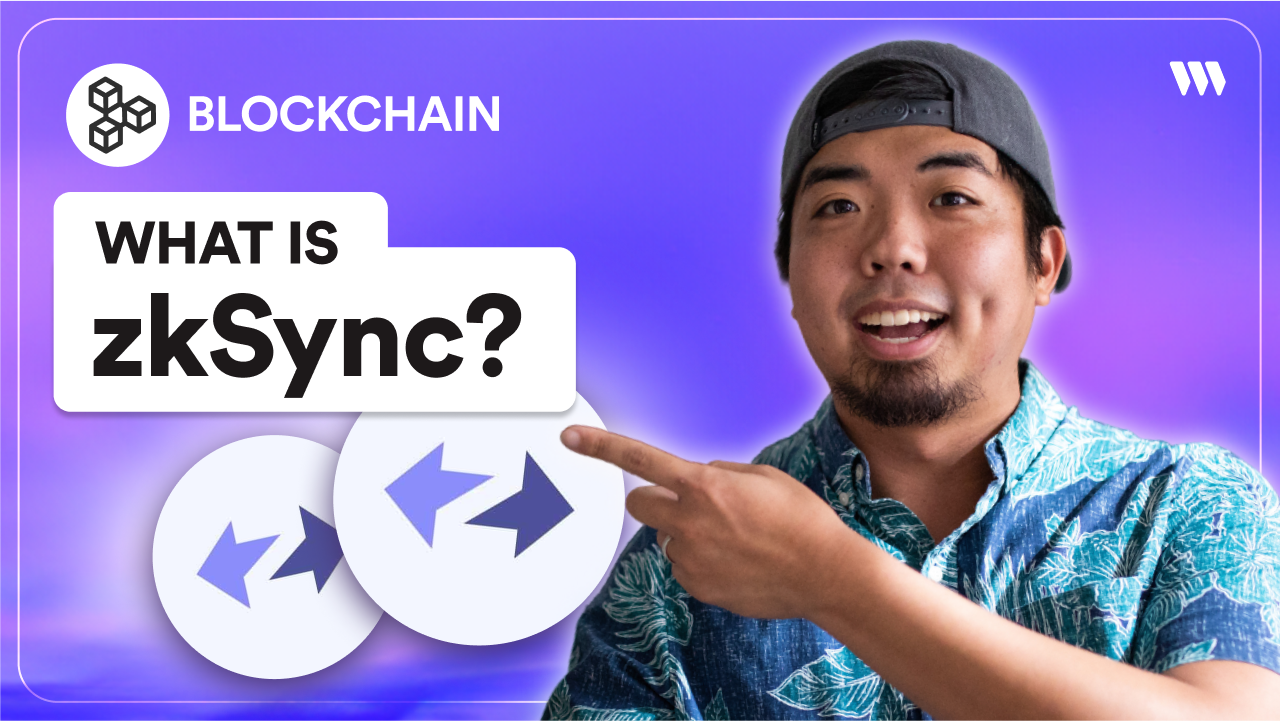What is ZKSync? Scaling Ethereum with zero-knowledge proofs

ZKSync, a Layer 2 rollup solution designed to scale Ethereum using zero-knowledge proofs. By leveraging advanced cryptography and innovative techniques, ZKSync aims to accelerate the mass adoption of blockchain by providing higher throughput and lower transaction costs.
One of the key advantages of ZKSync is its EVM compatibility, which allows developers to use familiar tools and languages such as Solidity and Viper to build onchain apps. This compatibility ensures a smooth transition for developers already experienced with Ethereum, making it easier to migrate existing projects or create new ones on the ZKSync platform.
Increased security with Zero-knowledge proofs
The power of ZKSync lies in its combination of zero-knowledge proofs, EVM compatibility, state diffs for data availability, and native account abstraction.
Zero-knowledge proofs provide a high level of security by relying on mathematical proofs rather than game theory, ensuring the integrity of transactions without revealing sensitive information.
ZKSync's state diffs approach to data availability is another crucial aspect of its scalability solution. Instead of posting all transaction data onto the Ethereum network, ZKSync only records the differences between states, significantly reducing the amount of data stored on-chain. This technique not only saves space but also contributes to lower transaction costs, making it more affordable for users to interact with dApps.
ZKSync's native account abstraction allows all transactions to be processed through the same mempool. This streamlined approach simplifies the user experience and enables externally owned accounts (EOAs) to utilize paymasters, a concept not commonly encountered in other platforms.
Getting Started with ZKSync
For developers eager to start building on ZKSync, the process is straightforward and accessible. The official ZKSync documentation provides a comprehensive Quick Start guide, walking developers through the initial setup and deployment of a Hello World project.
To begin, simply run the command npx zksync-cli create demo in your terminal. This powerful tool automates the project setup process, allowing you to start deploying and experimenting with ZKSync in no time. The CLI tool guides you through the necessary steps, making it easy to get up and running quickly.
Implementing Account Abstraction on ZKSync
One of the most groundbreaking features of ZKSync is its native account abstraction, which offers a more flexible and user-friendly experience compared to traditional Ethereum accounts.
To leverage account abstraction on ZKSync, developers can utilize the platform's built-in tools and libraries. The ZKSync SDK provides a seamless way to create and manage smart contract wallets, allowing developers to define custom logic for transaction validation, gas fee payments, and more.
And with a few lines of code you can easily implement this using thirdweb SDKs.

Exploring the Potential of ZKSync
As the blockchain industry continues to evolve, ZKSync is well-positioned to drive innovation and push the boundaries of what is possible with decentralized technology. The platform's unique combination of zero-knowledge proofs, EVM compatibility, state diffs, and native account abstraction opens up a world of possibilities for developers and users alike.
One of the most exciting aspects of ZKSync is its potential to enable new use cases and applications that were previously hindered by scalability limitations and high transaction costs. With ZKSync's high throughput and low fees, developers can build dApps that cater to a broader audience, including those in regions with limited access to traditional financial services.
Building apps and games on ZKsync
ZKSync scales Ethereum with zero-knowledge proofs, offering high throughput, low costs, and EVM compatibility. Its unique features and developer-friendly tools make it an ideal platform for building scalable, secure Web3 apps.
thirdweb's full-stack web3 development kit makes it easy to build on ZKsync:
✦ Frontend: Client-side SDKs to connect users to web3
✦ Backend: Scalable contract APIs backed by secure wallets
✦ Onchain: Pre-built & extendable contracts


